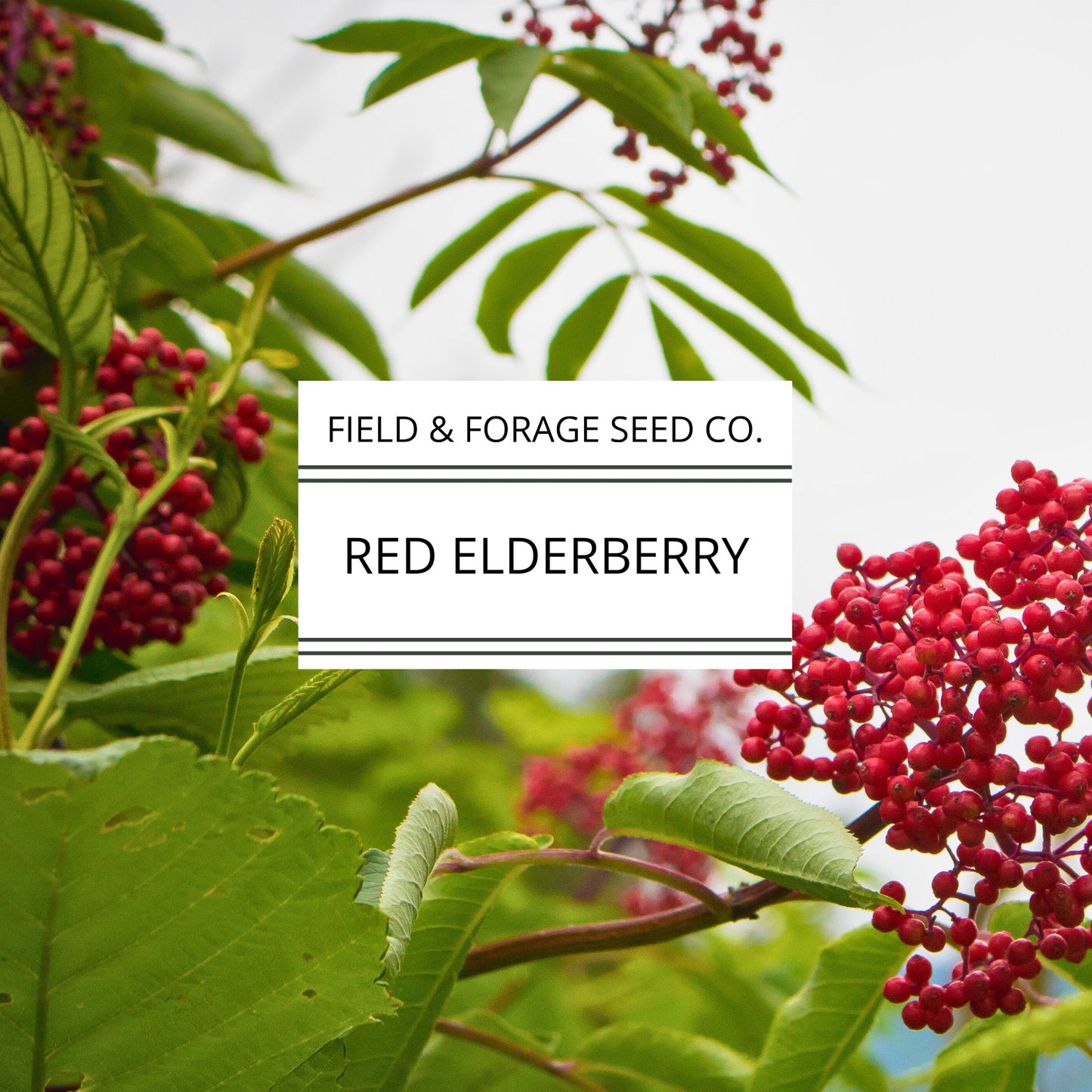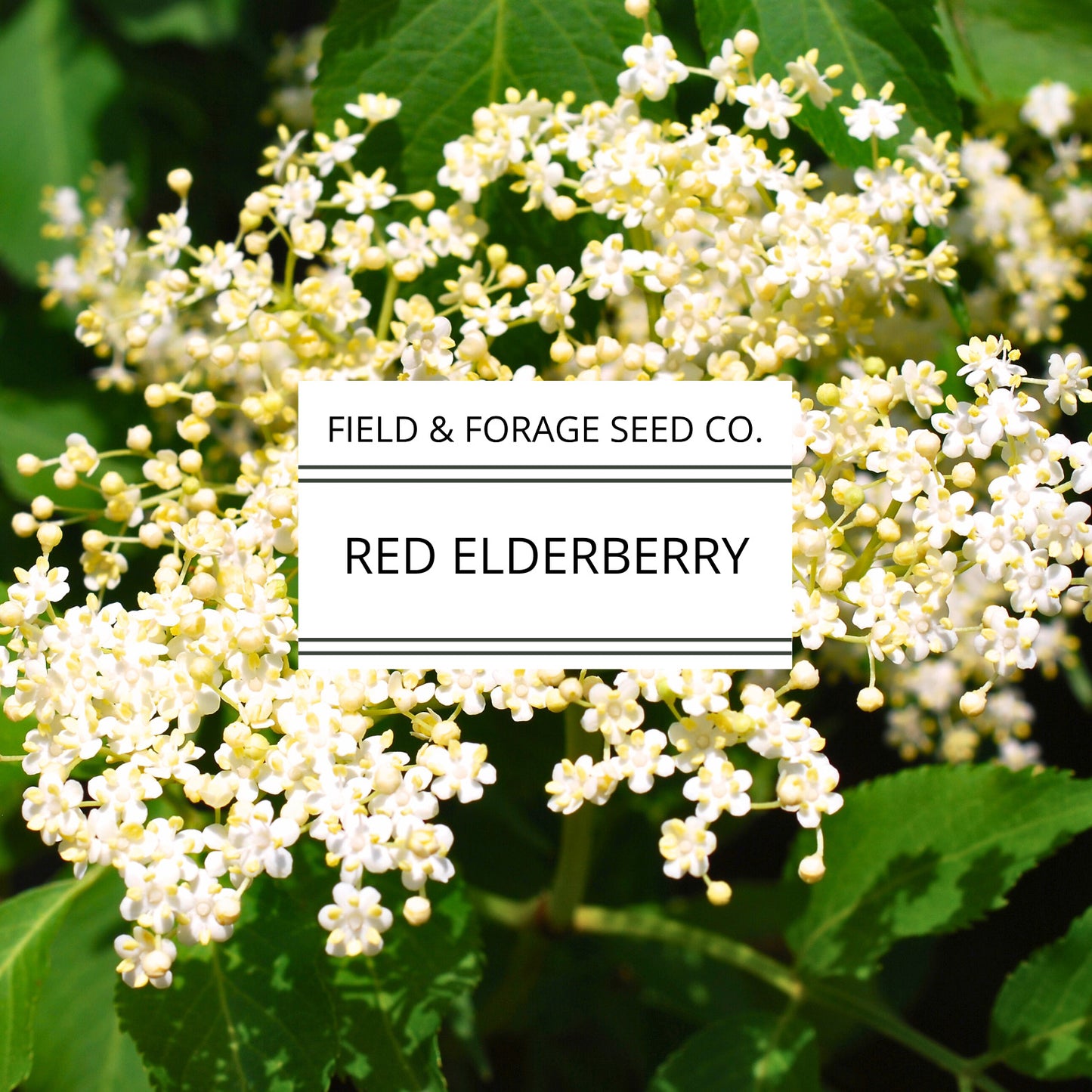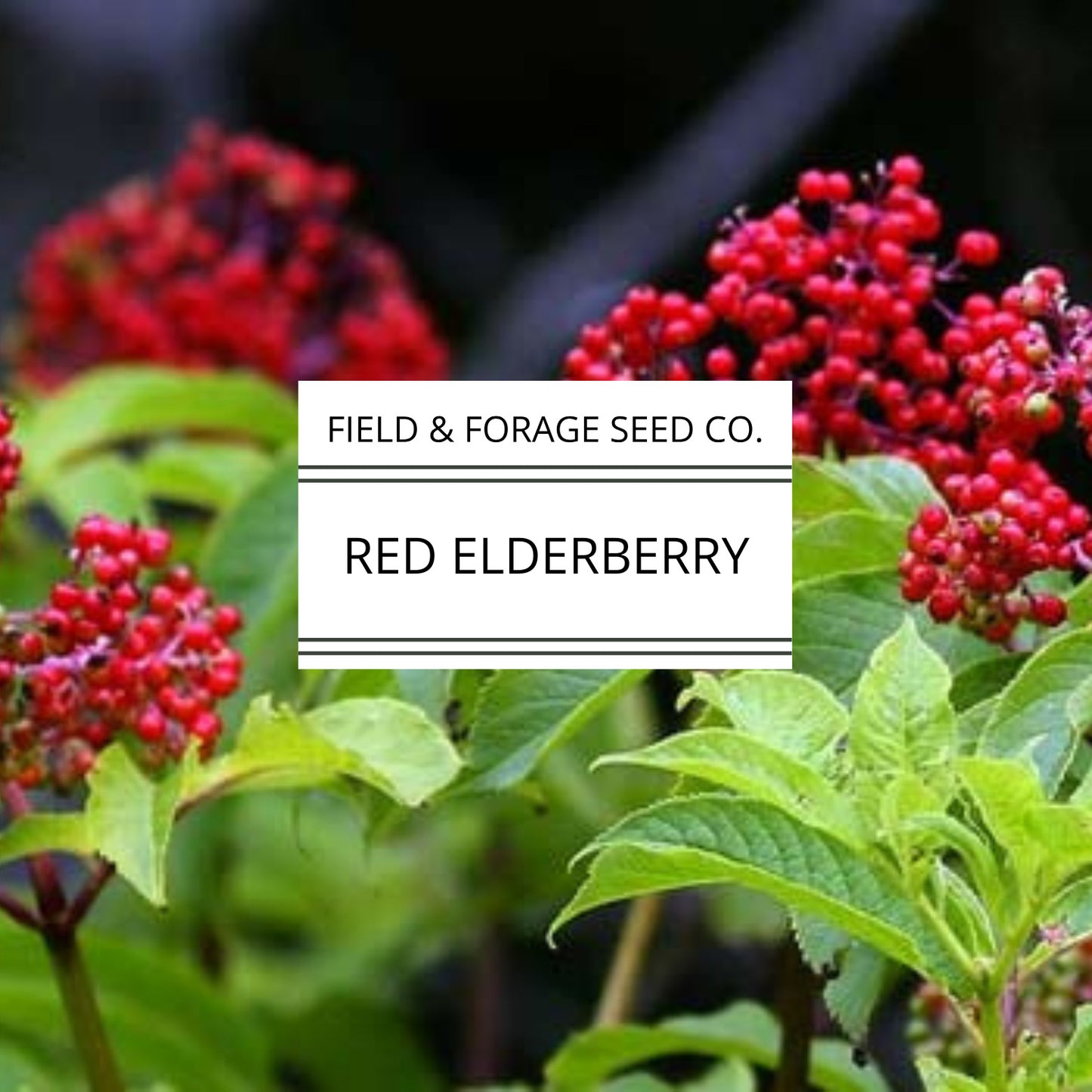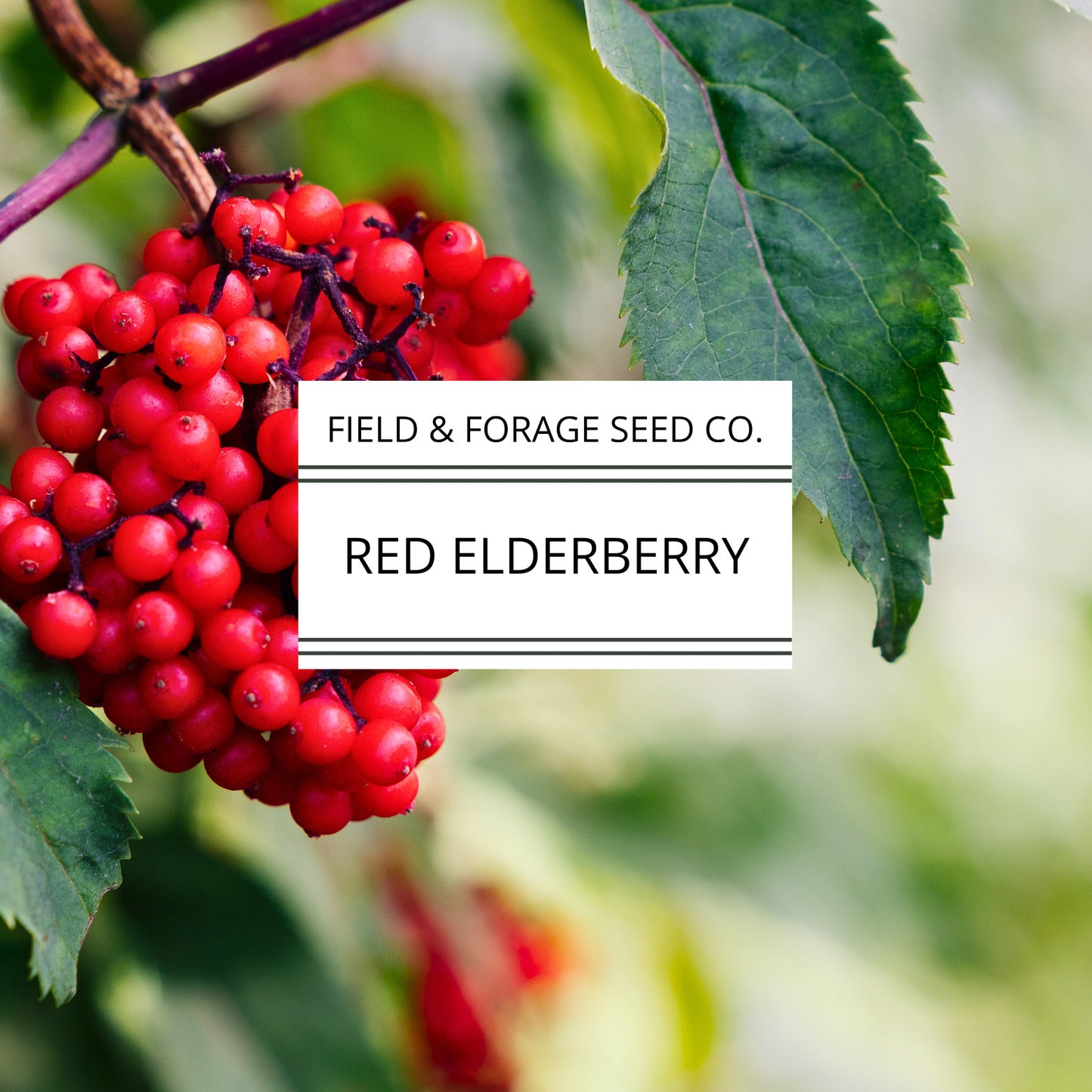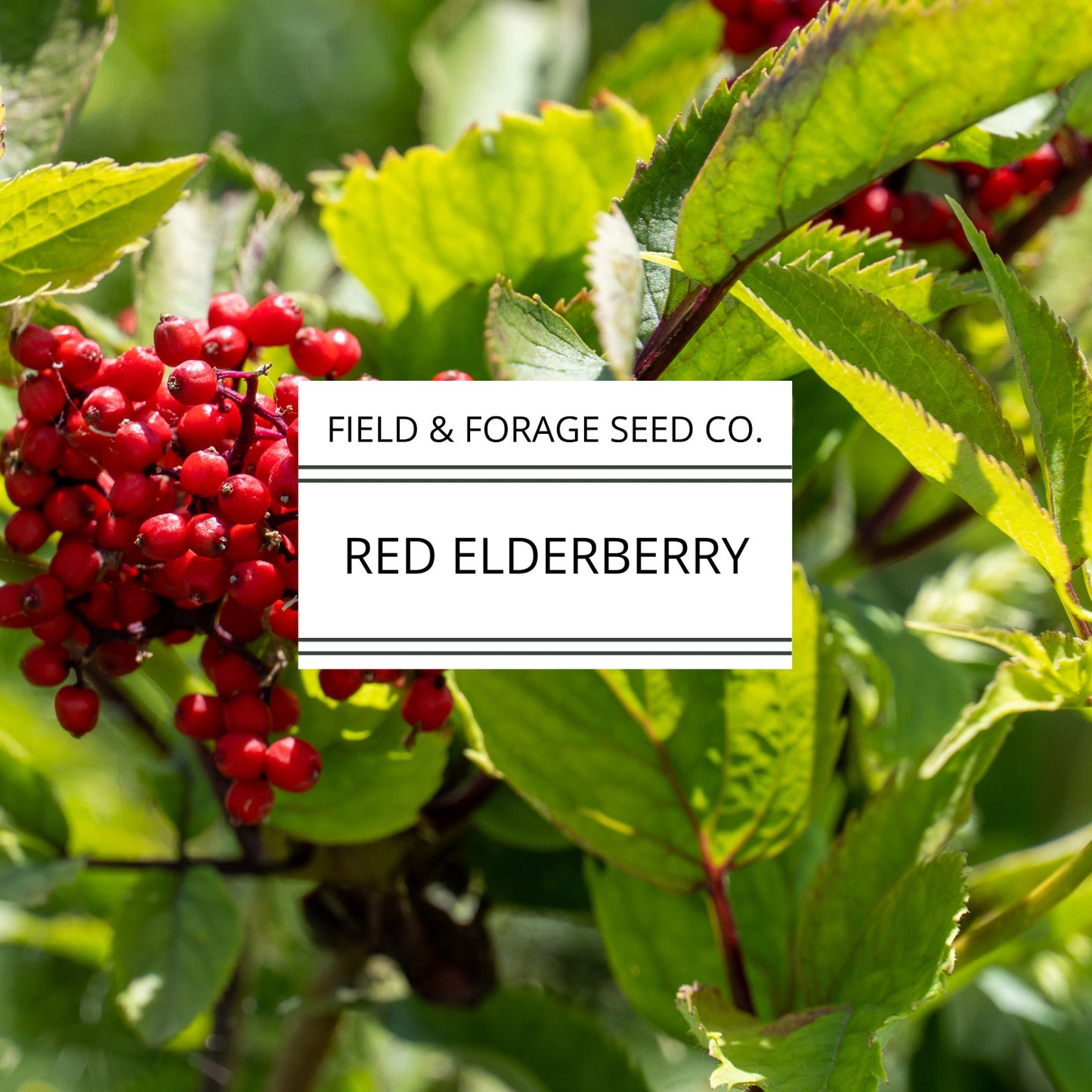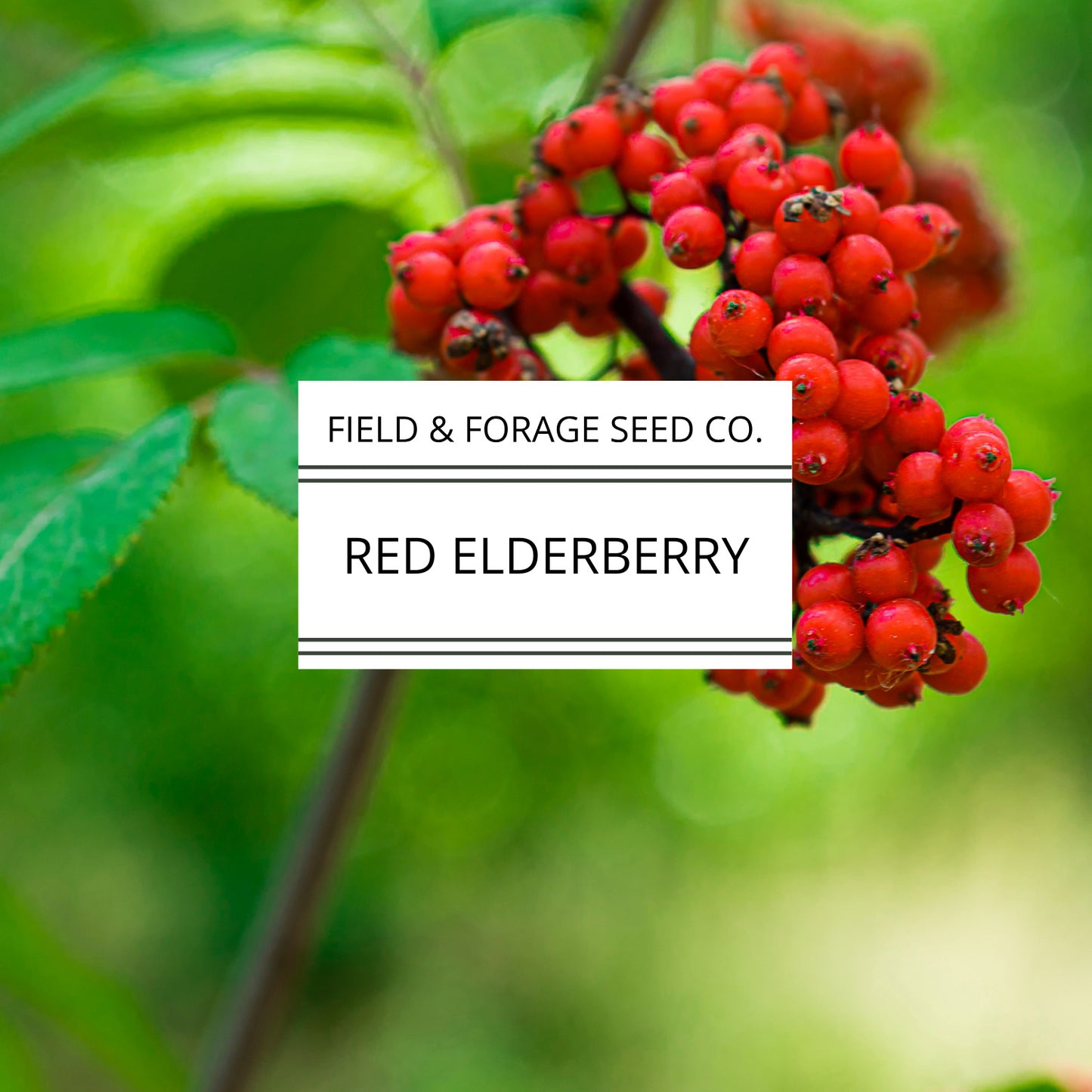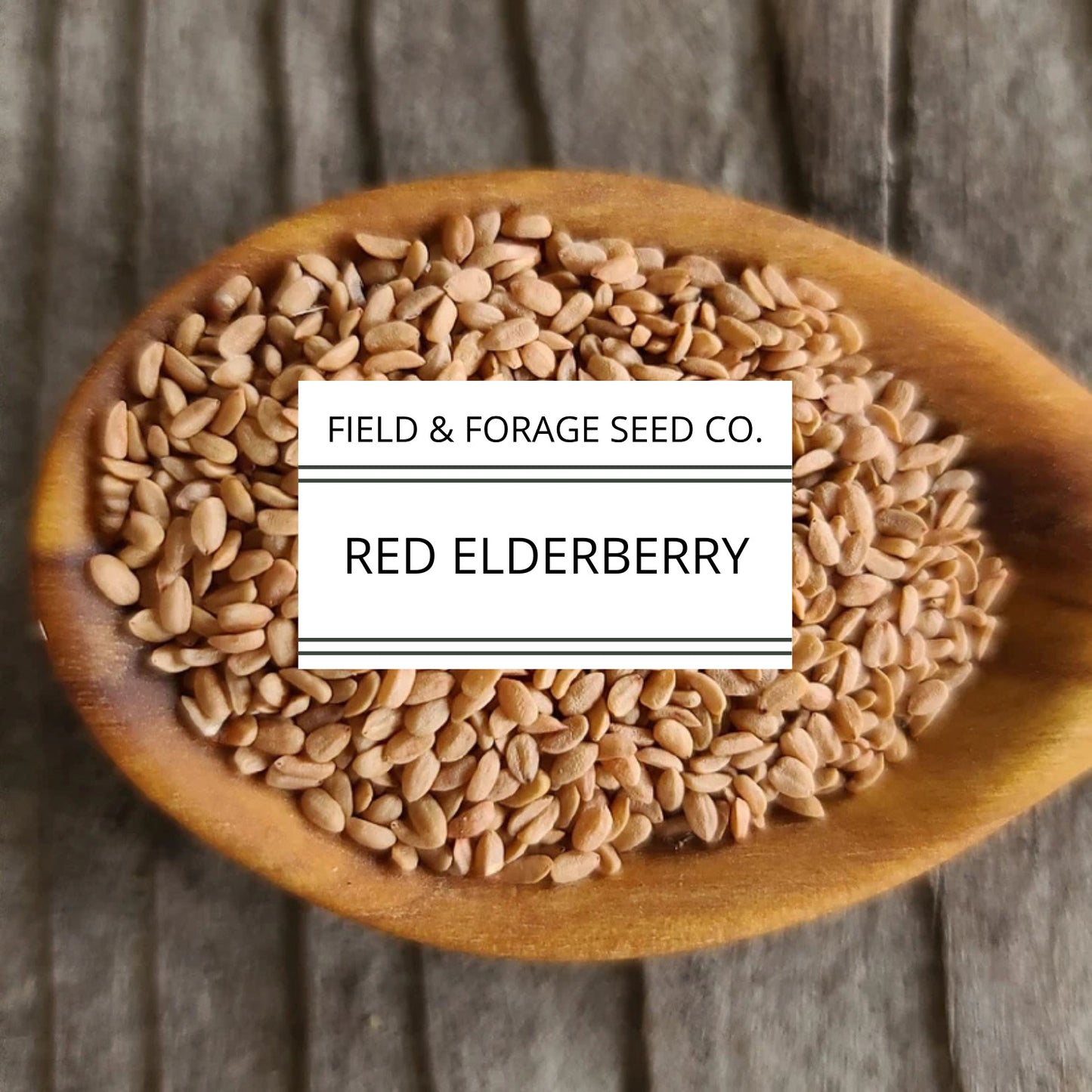Field and Forage Seed Co.
RED Elderberry Seeds | Sambucus racemosa | Heirloom | Non-GMO | Medicinal Shrub | 200 Seeds
RED Elderberry Seeds | Sambucus racemosa | Heirloom | Non-GMO | Medicinal Shrub | 200 Seeds
Couldn't load pickup availability
RED Elderberry Seeds | Sambucus racemosa | Heirloom | Non-GMO | Medicinal Shrub | Pollinator Plant | Edible Berries | Native Perennial | 200 Seeds
Also Known As: Red-berried Elder (Sambucus Racemosa)
A striking native shrub with clusters of vivid red berries and lacy white spring blooms, Red Elderberry (Sambucus racemosa) brings both beauty and ecological value to your landscape. Birds and pollinators love it—and so will you. Historically used by Indigenous communities and herbalists, this fast-growing species thrives in woodland edges and moist soils.
Great for food forests, naturalized borders, or wildlife gardens, elderberries grow into tall, showy plants that offer seasonal interest and a strong connection to the land.
Toxic Raw:
The berries, stems, leaves, and roots contain cyanogenic glycosides, which can cause nausea, vomiting, and more severe symptoms if consumed without proper preparation.
Skill Level: Intermediate – Germination requires cold stratification, but once established, it's hardy, vigorous, and low-maintenance. Ideal for native plant enthusiasts and wildlife gardeners.
Pollinator Friendly:
Attracts:
• Native bees
• Butterflies
• Birds
• Other beneficial insects
Planting & Care Details:
• Light: Partial shade to full sun
• Plant Height: 8–12 ft
• Spacing: 4–6 ft apart
• Watering: Keep consistently moist, especially during establishment
• Soil: Rich, well-drained to damp; tolerates clay
• Frost Sensitivity: Hardy perennial
GERMINATION:
Seeds need cold stratification:
Mix with moist sand and refrigerate 60–90 days before planting. Sow ¼" deep in pots or direct sow in fall. Germinates in spring after chilling period.
Growing Tips:
• Thrives in woodland edges and riparian zones
• Mulch to retain moisture and suppress weeds
• Berries are for wildlife or medicinal use only—do not eat raw
• Prune in late winter to encourage strong growth
Share
